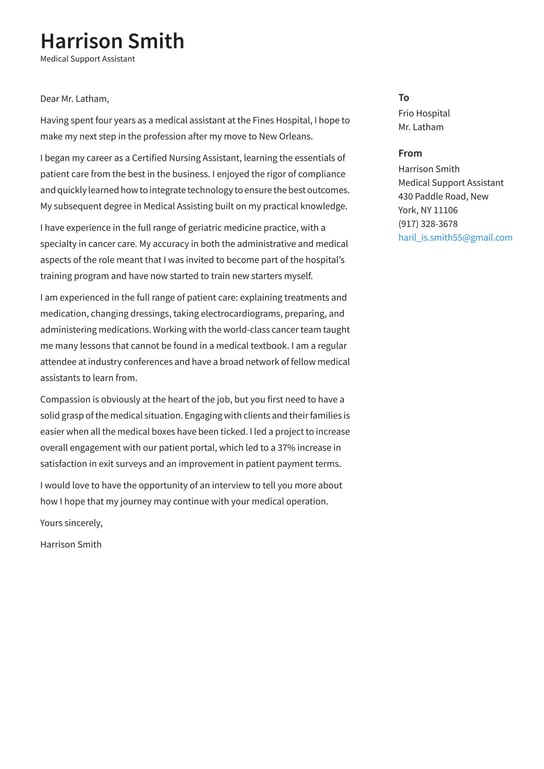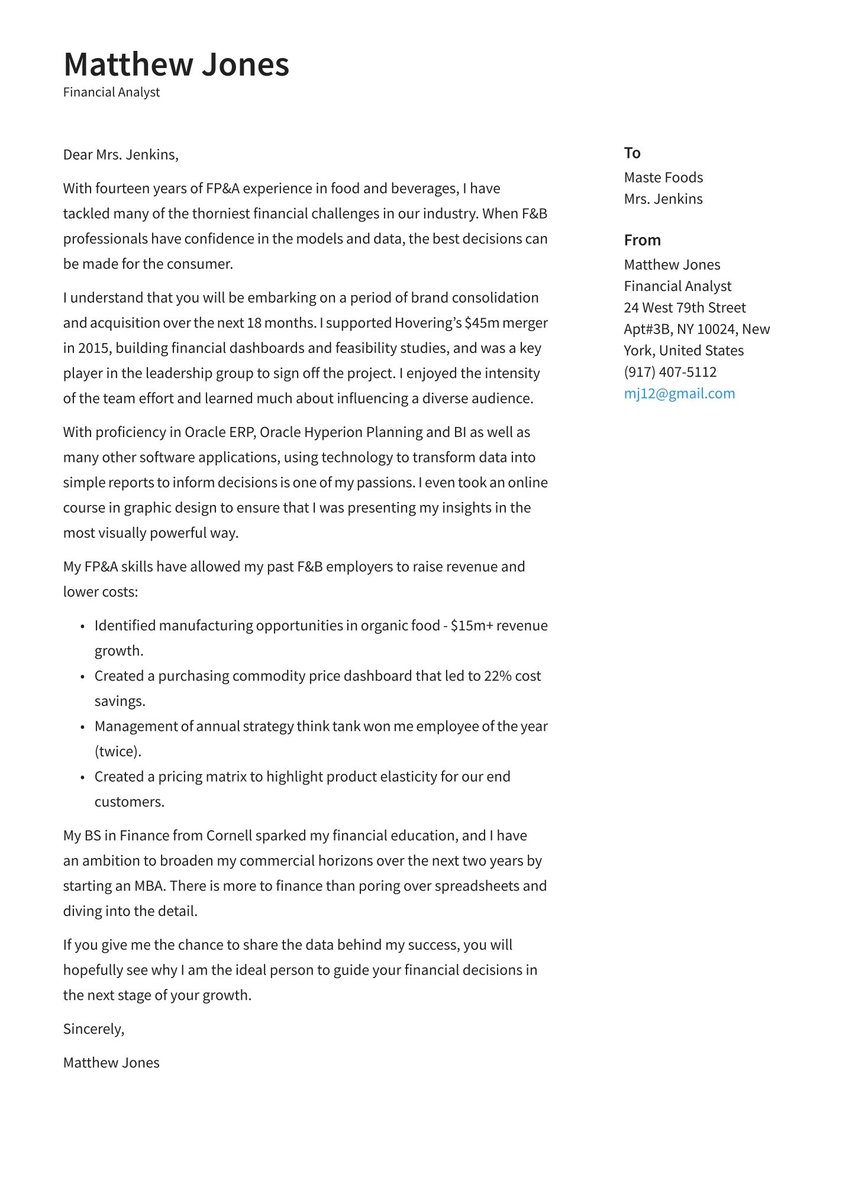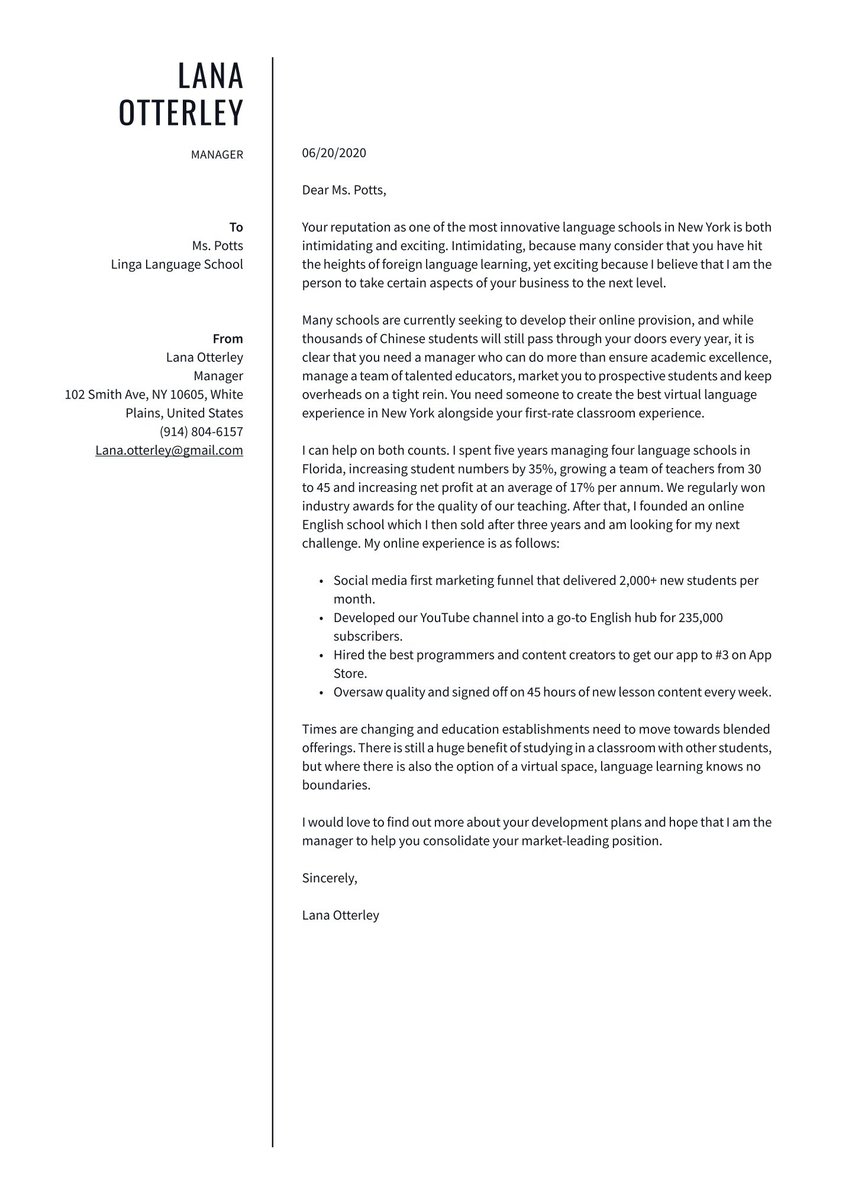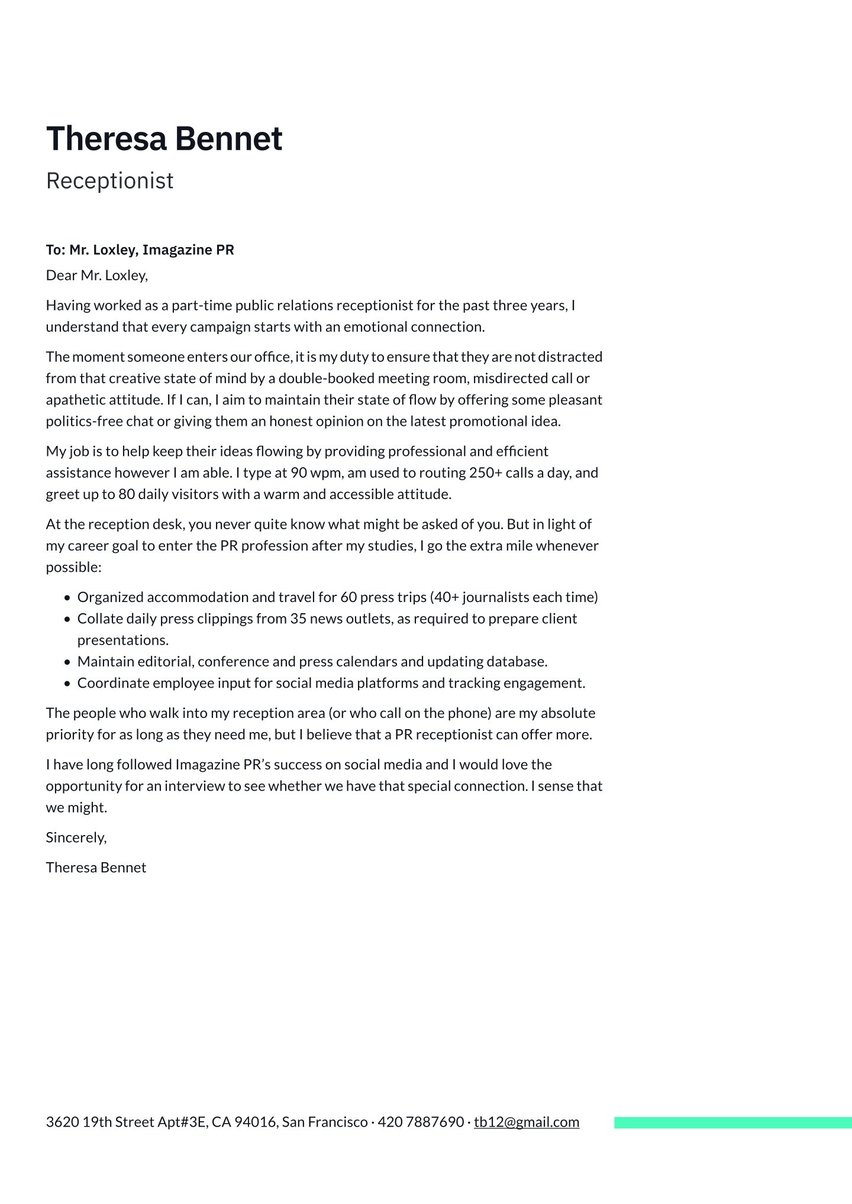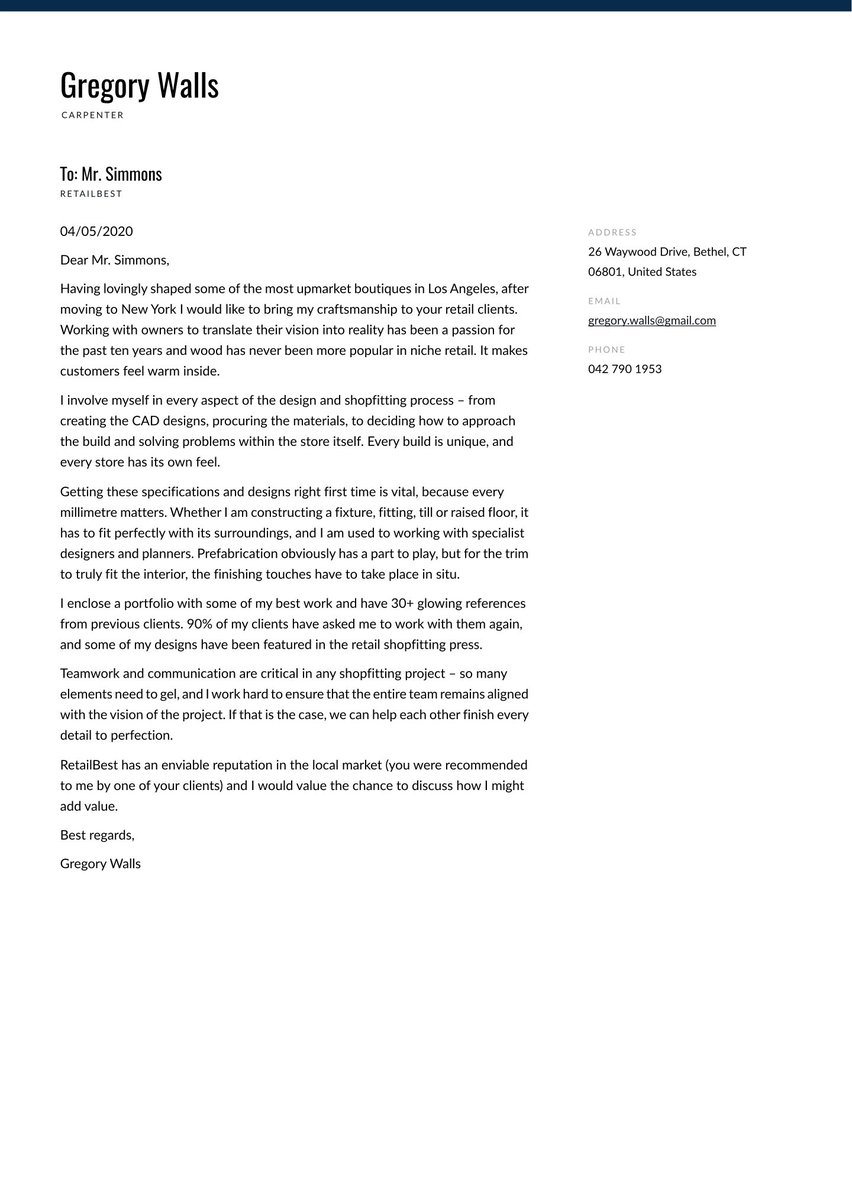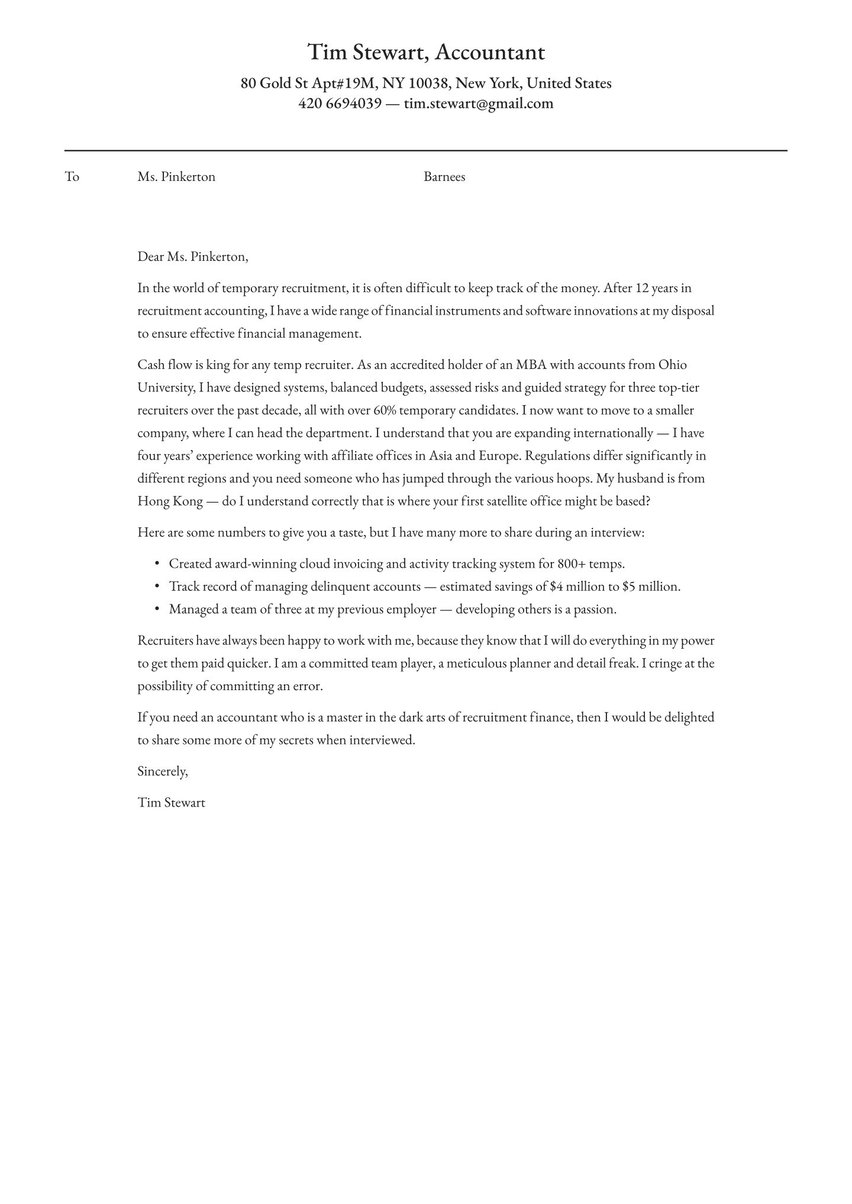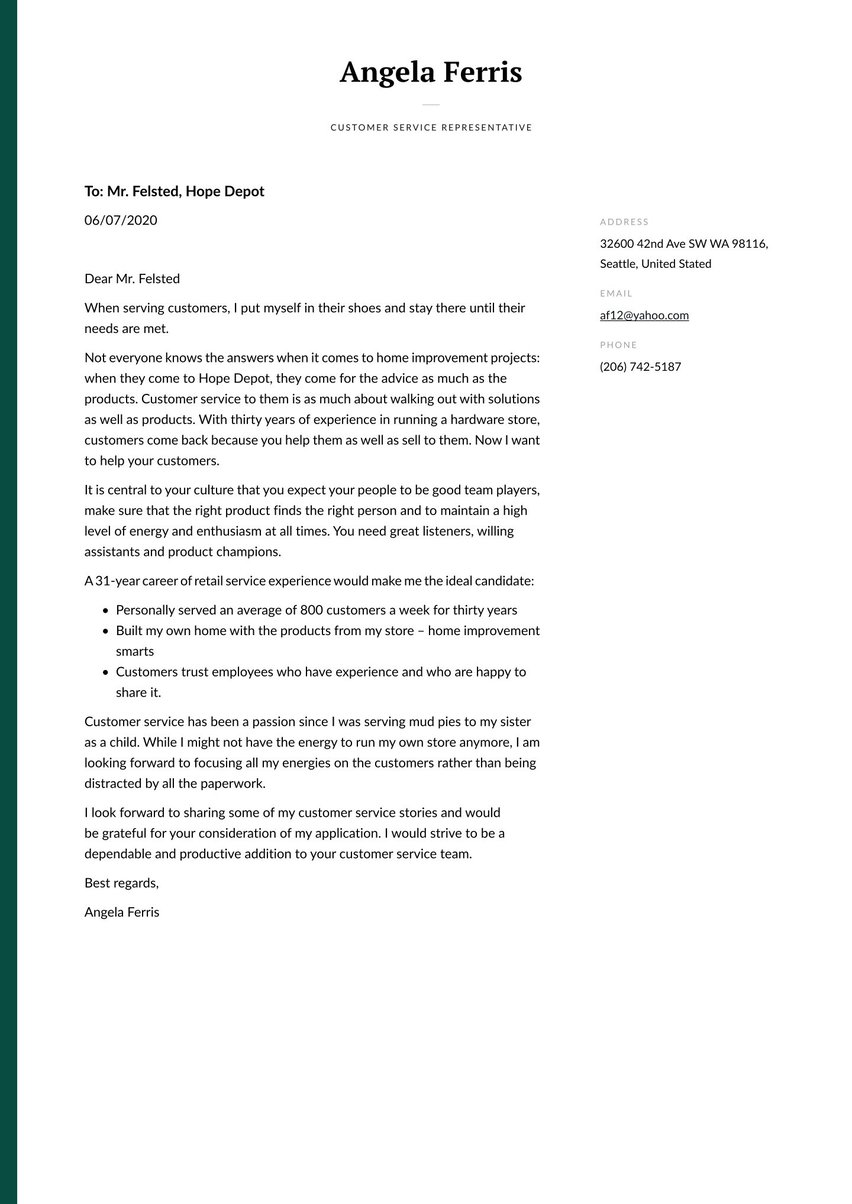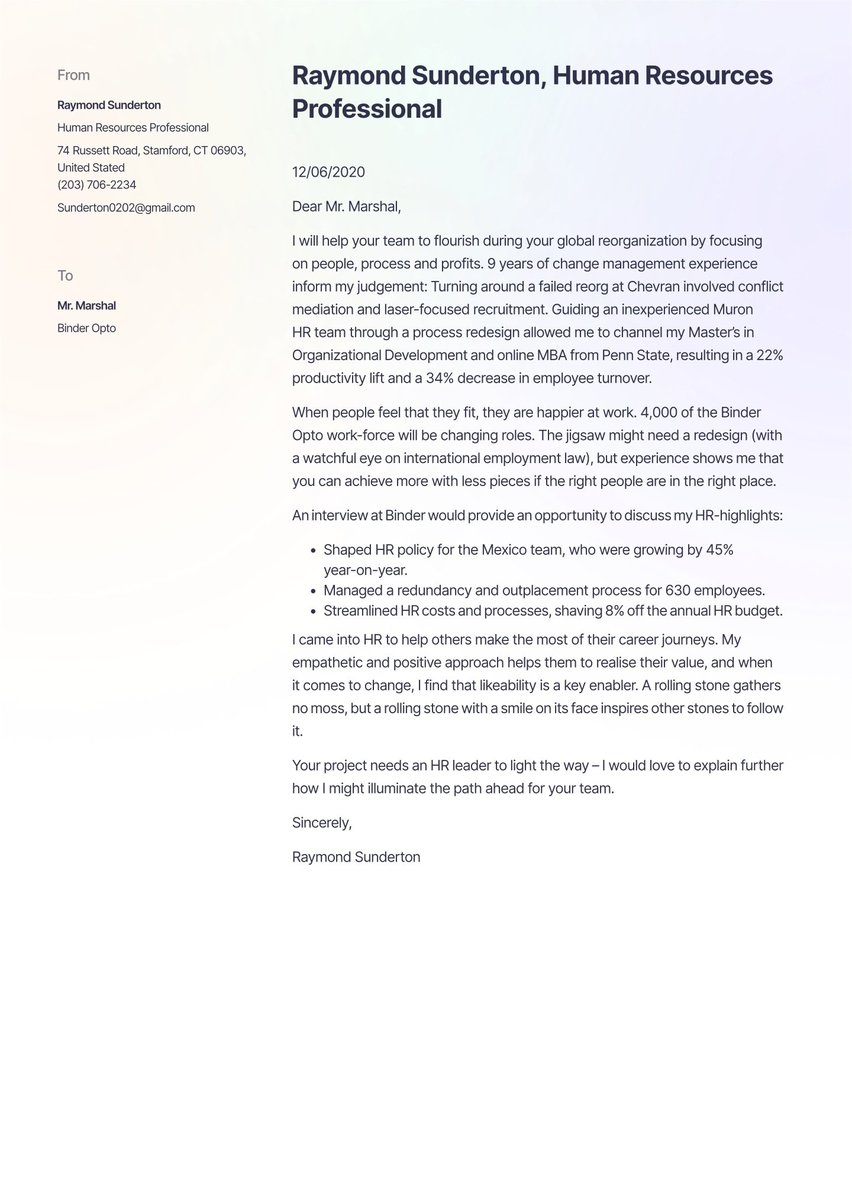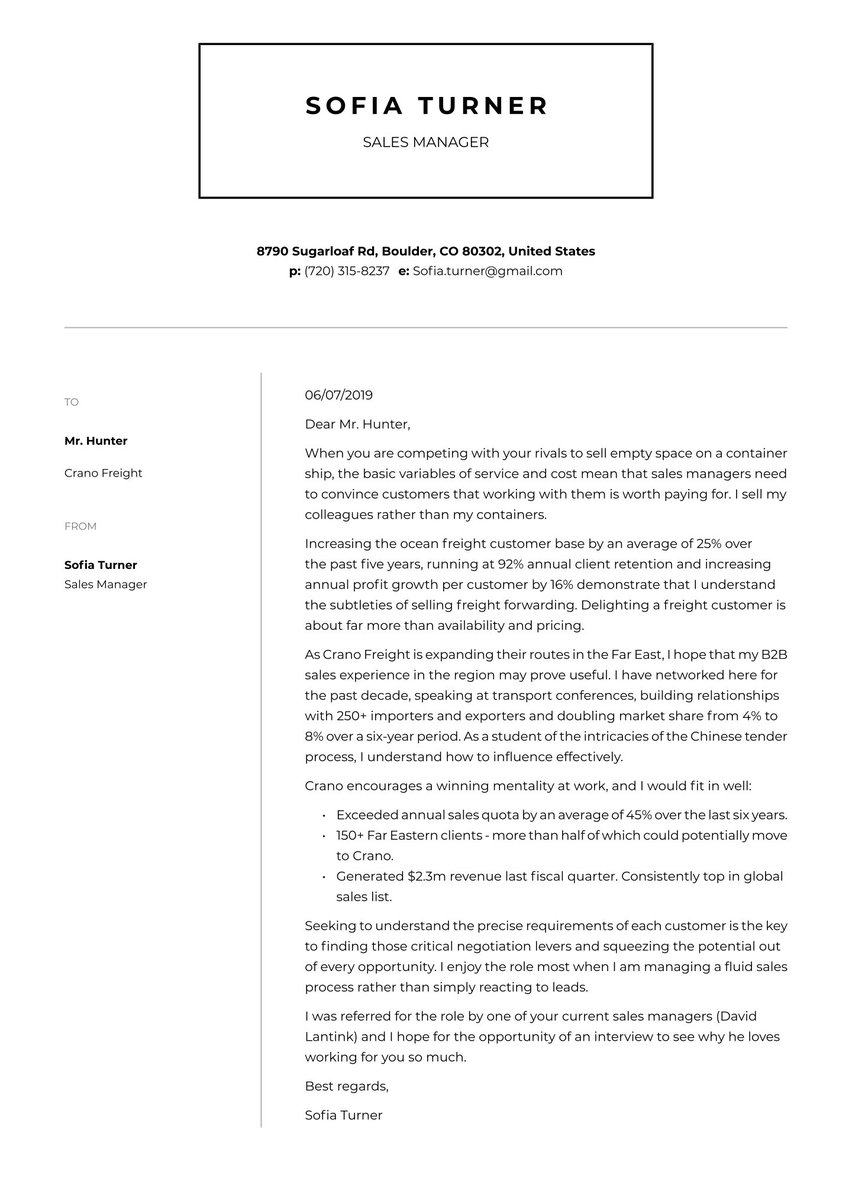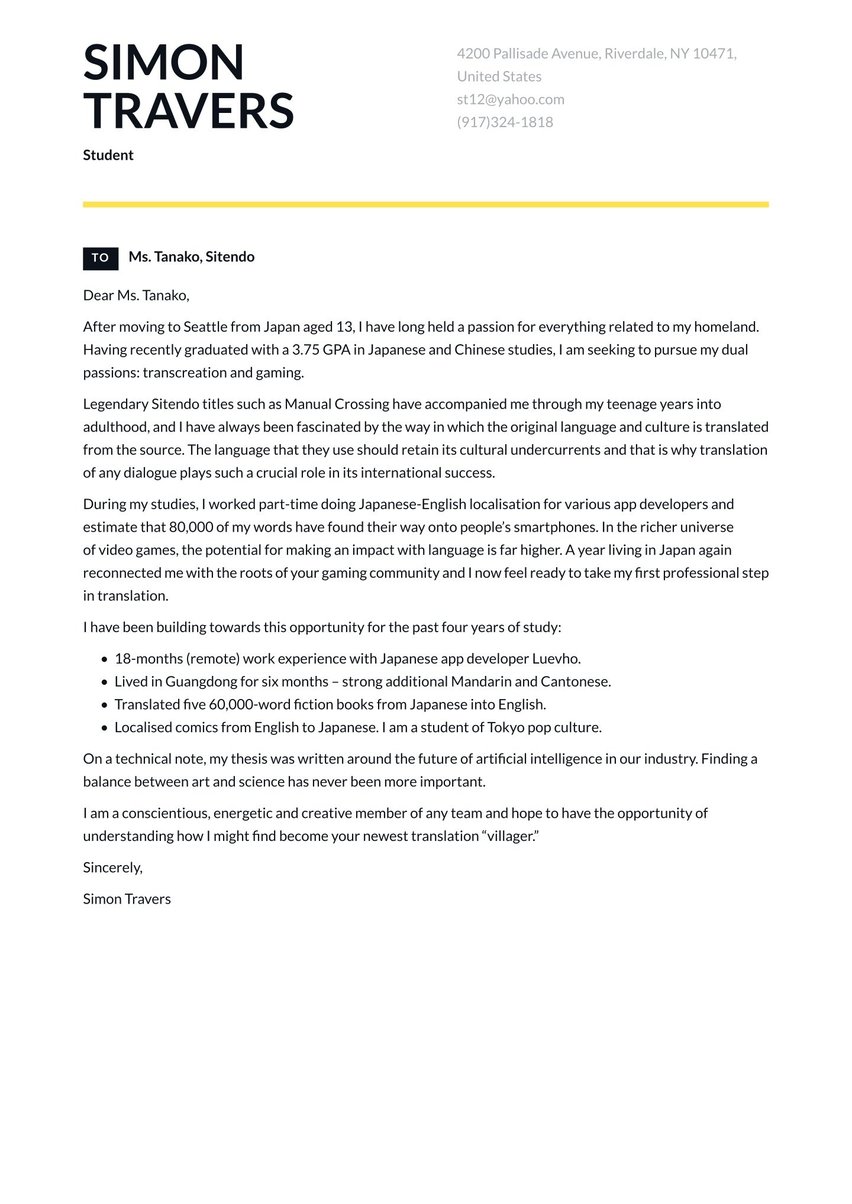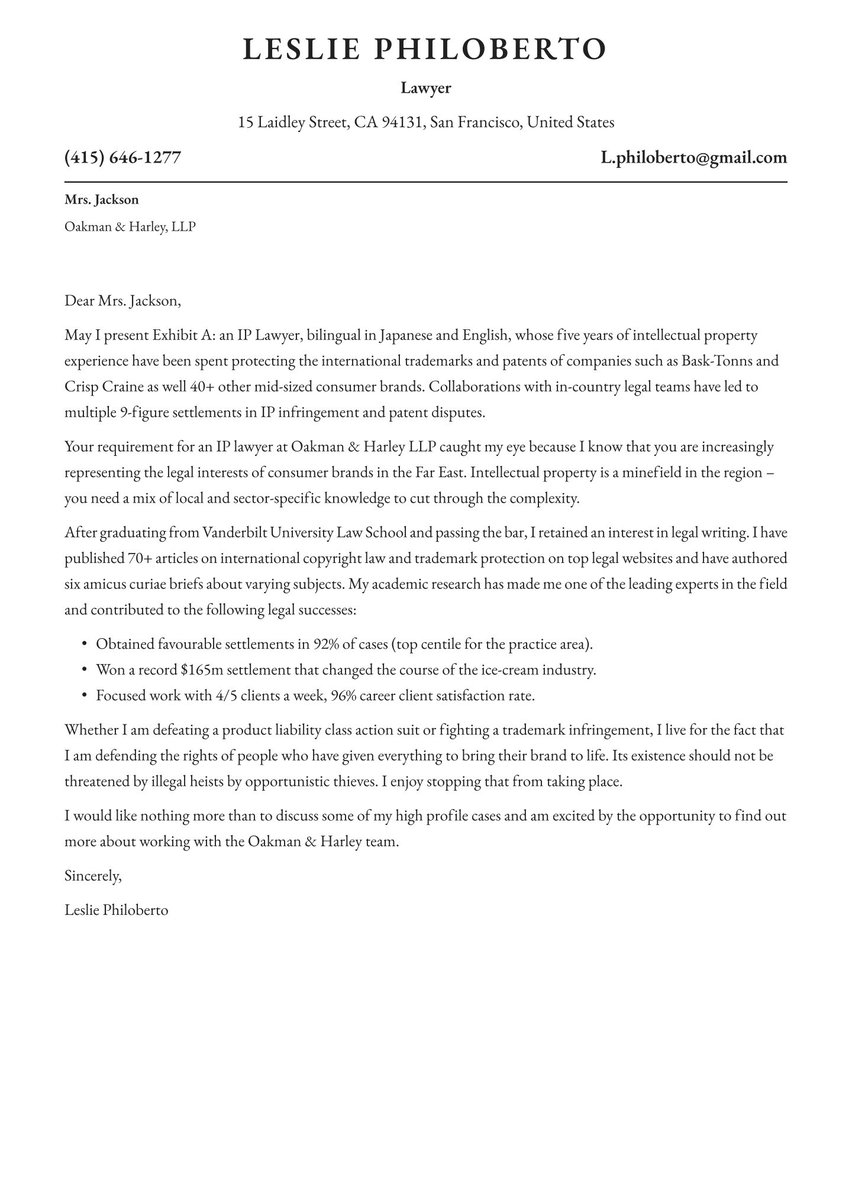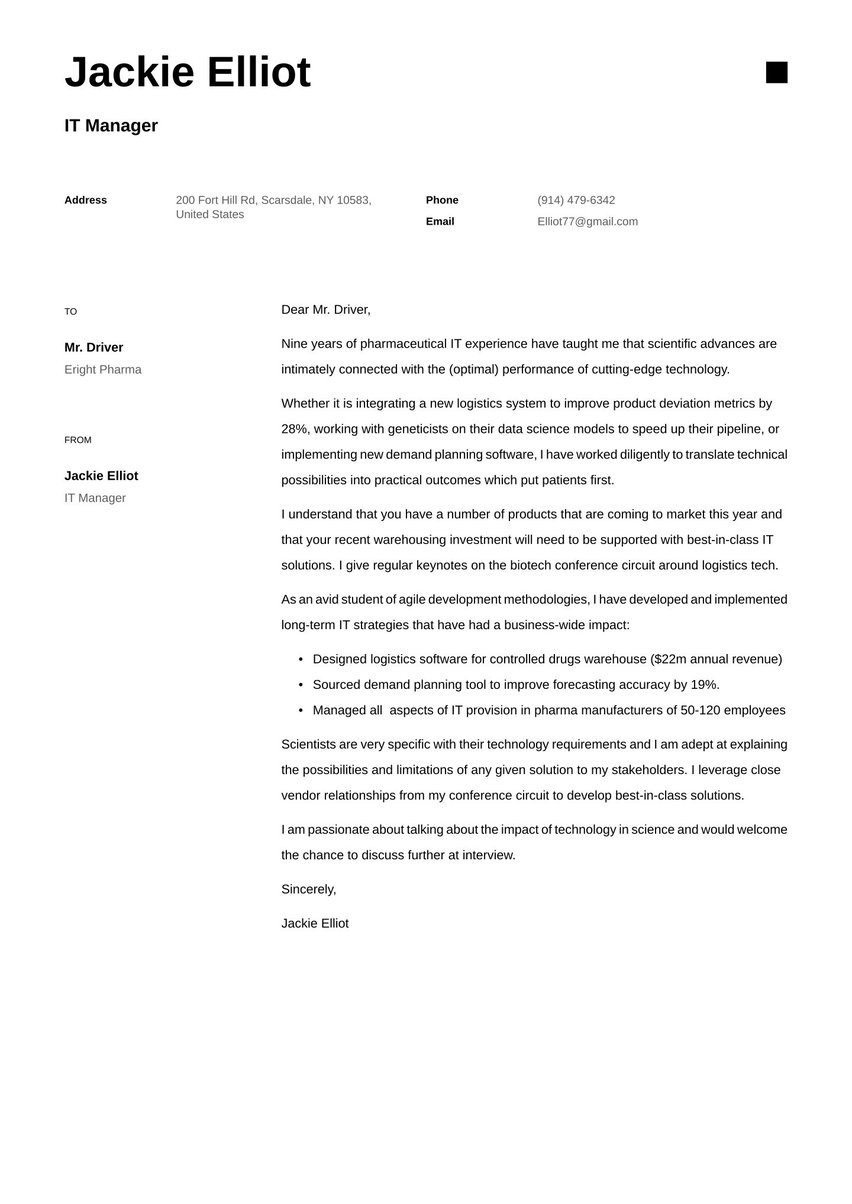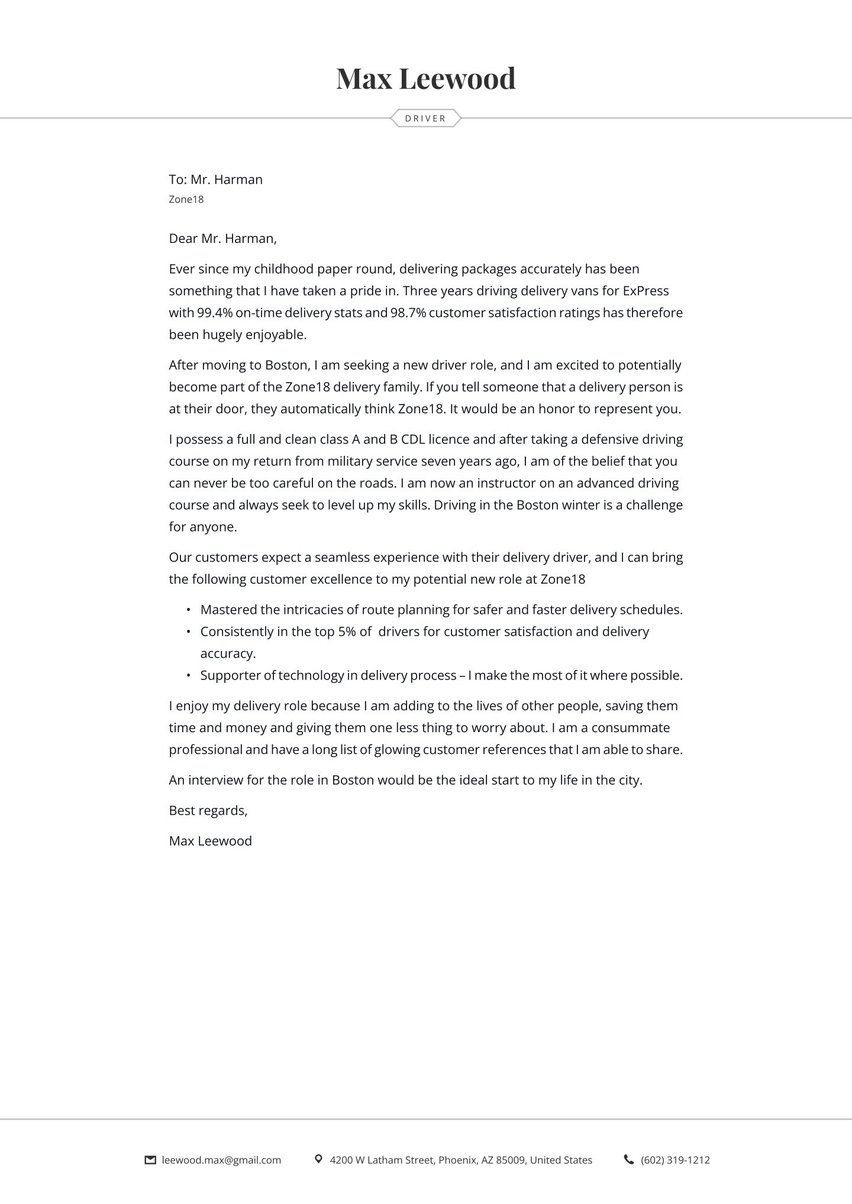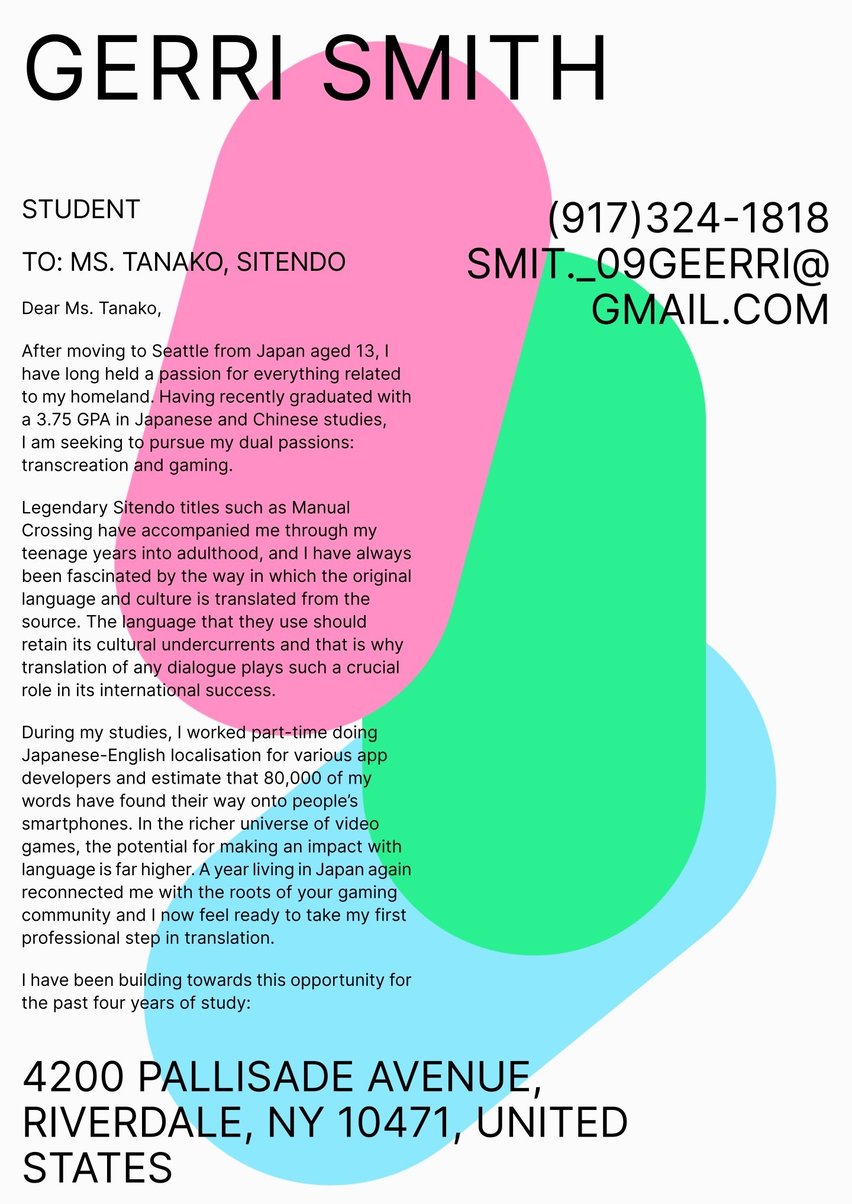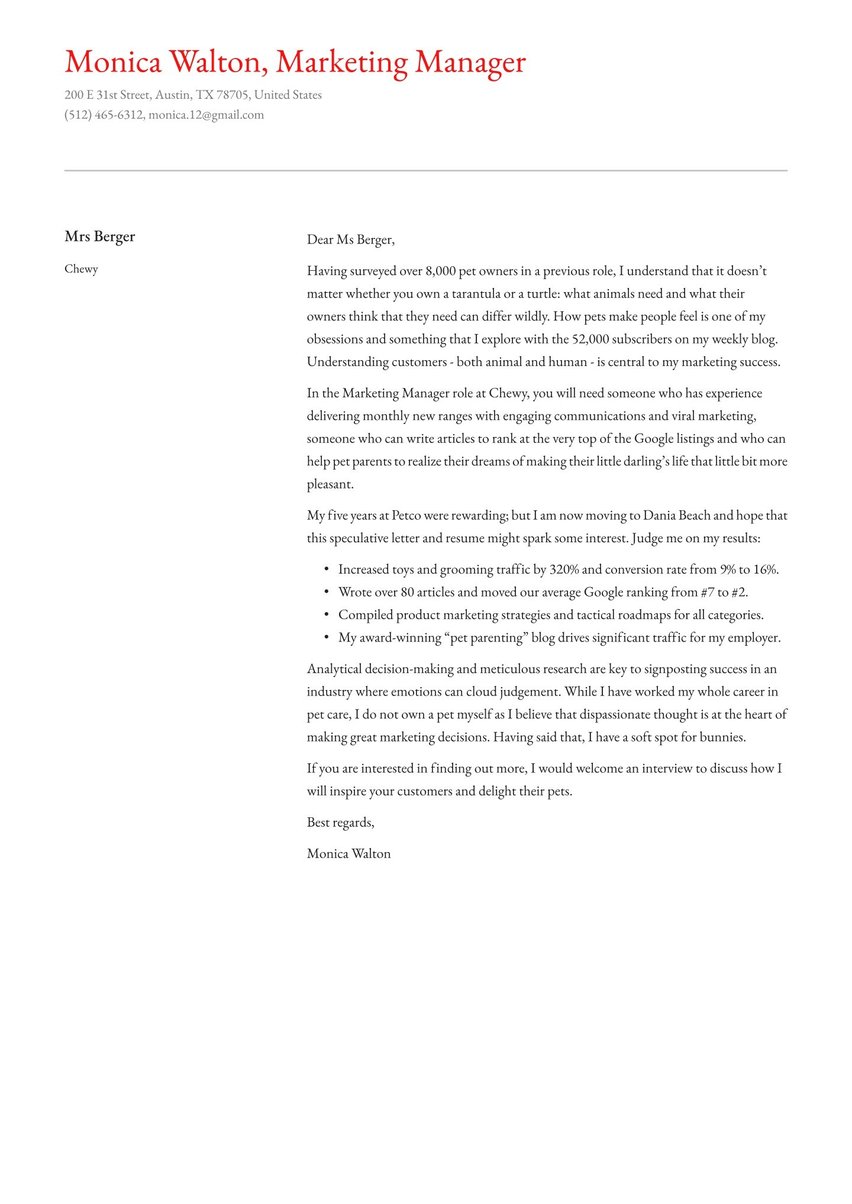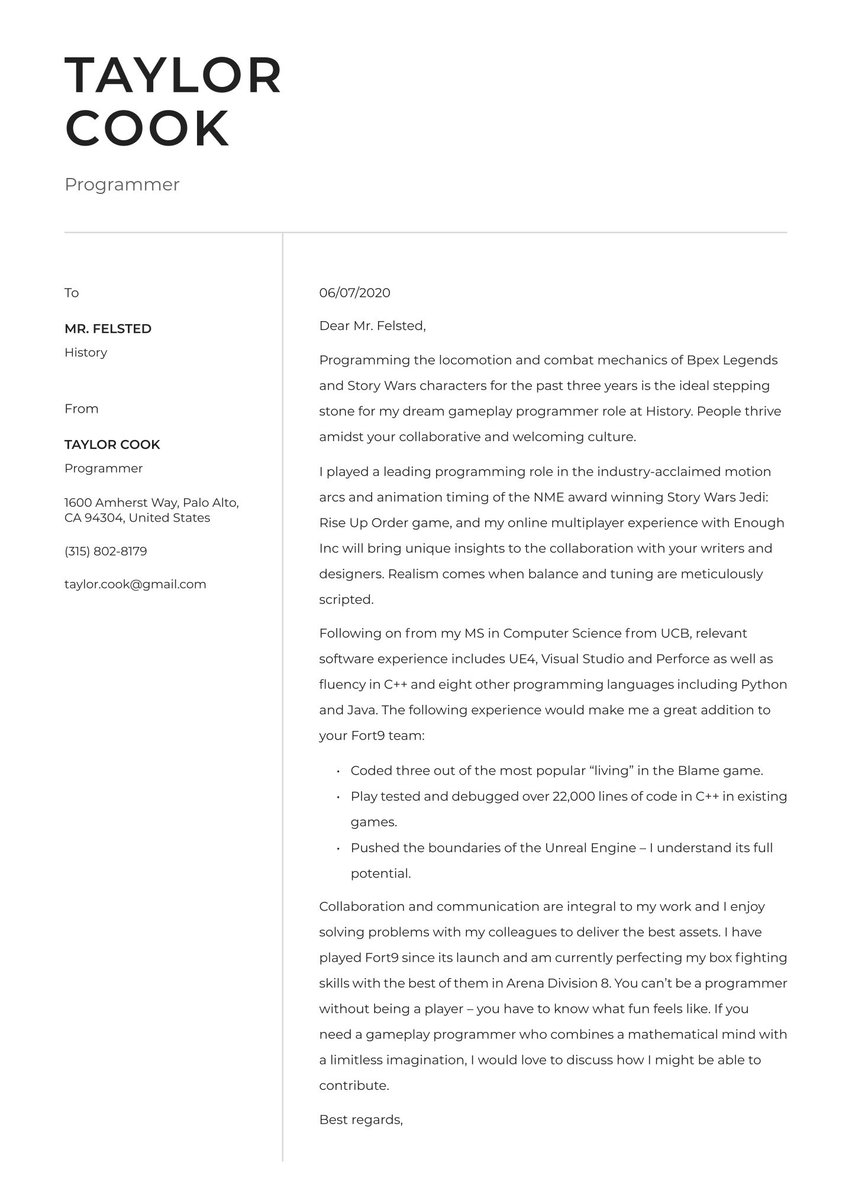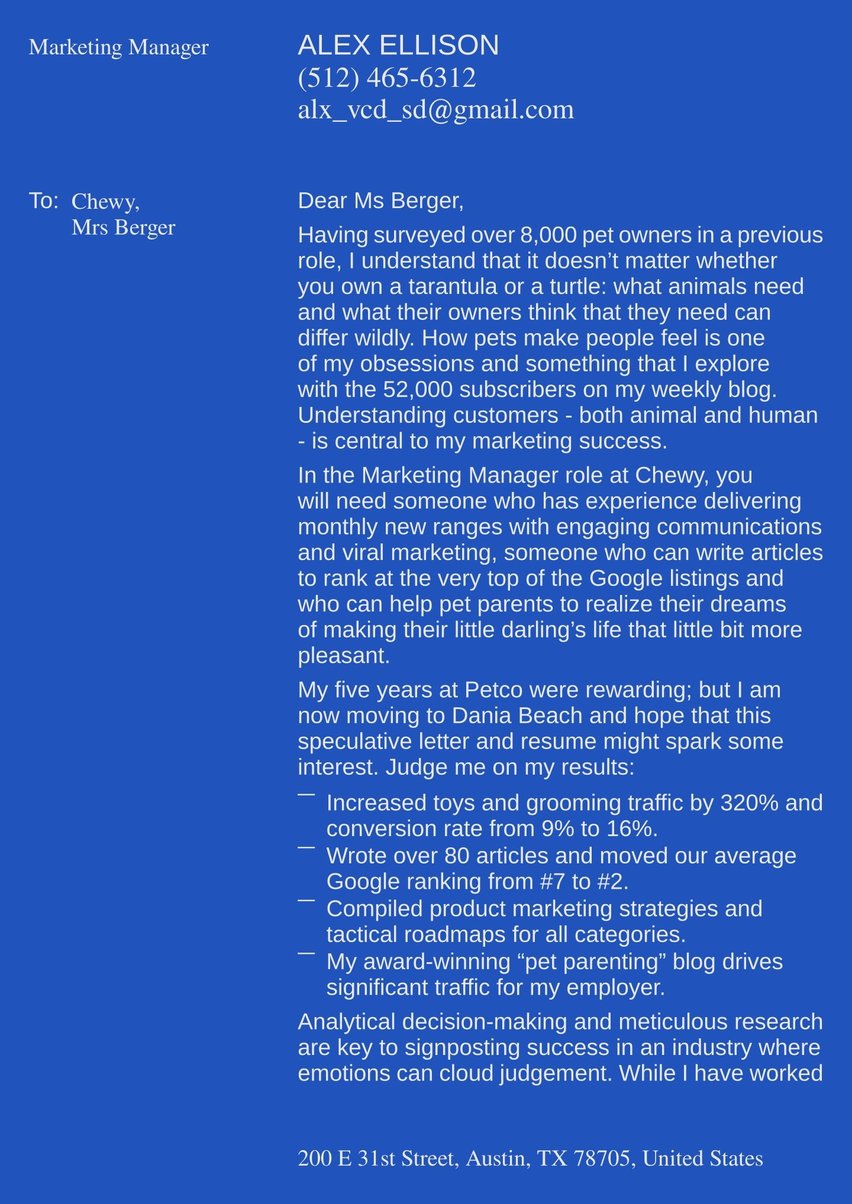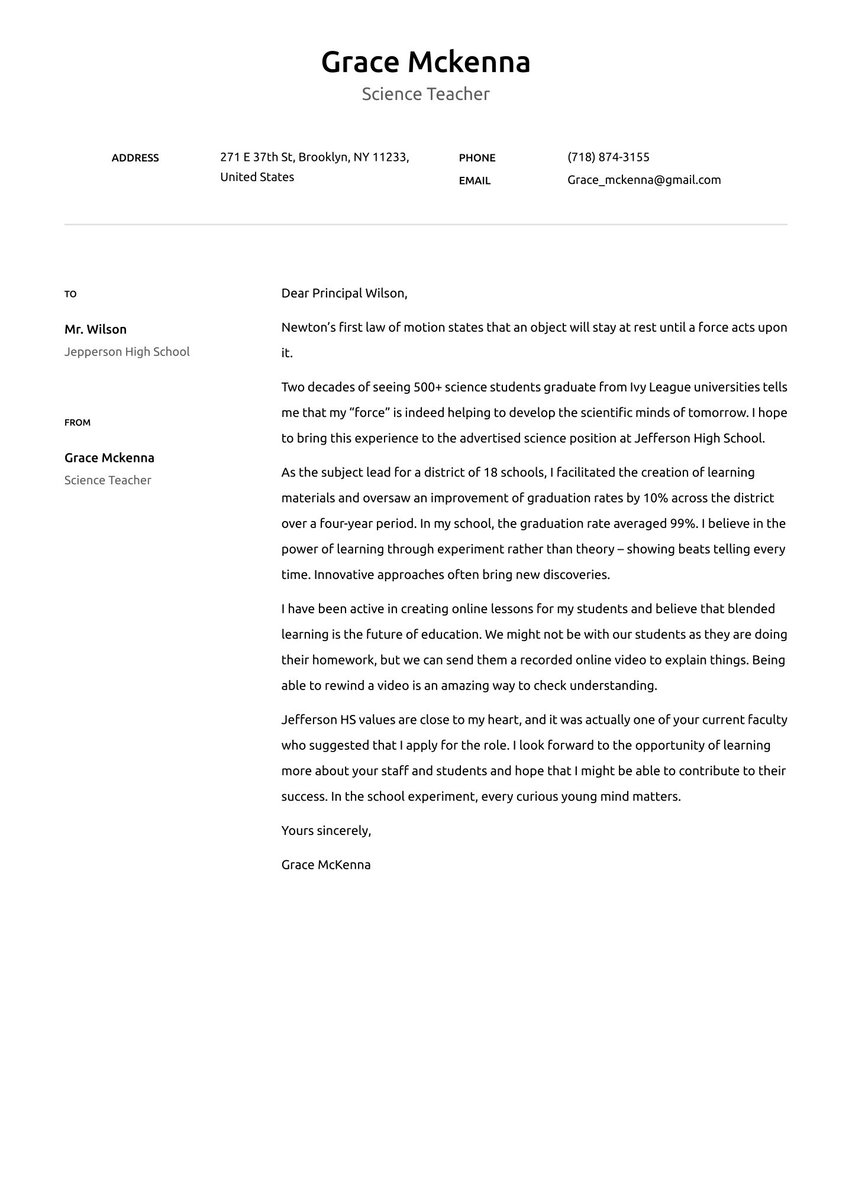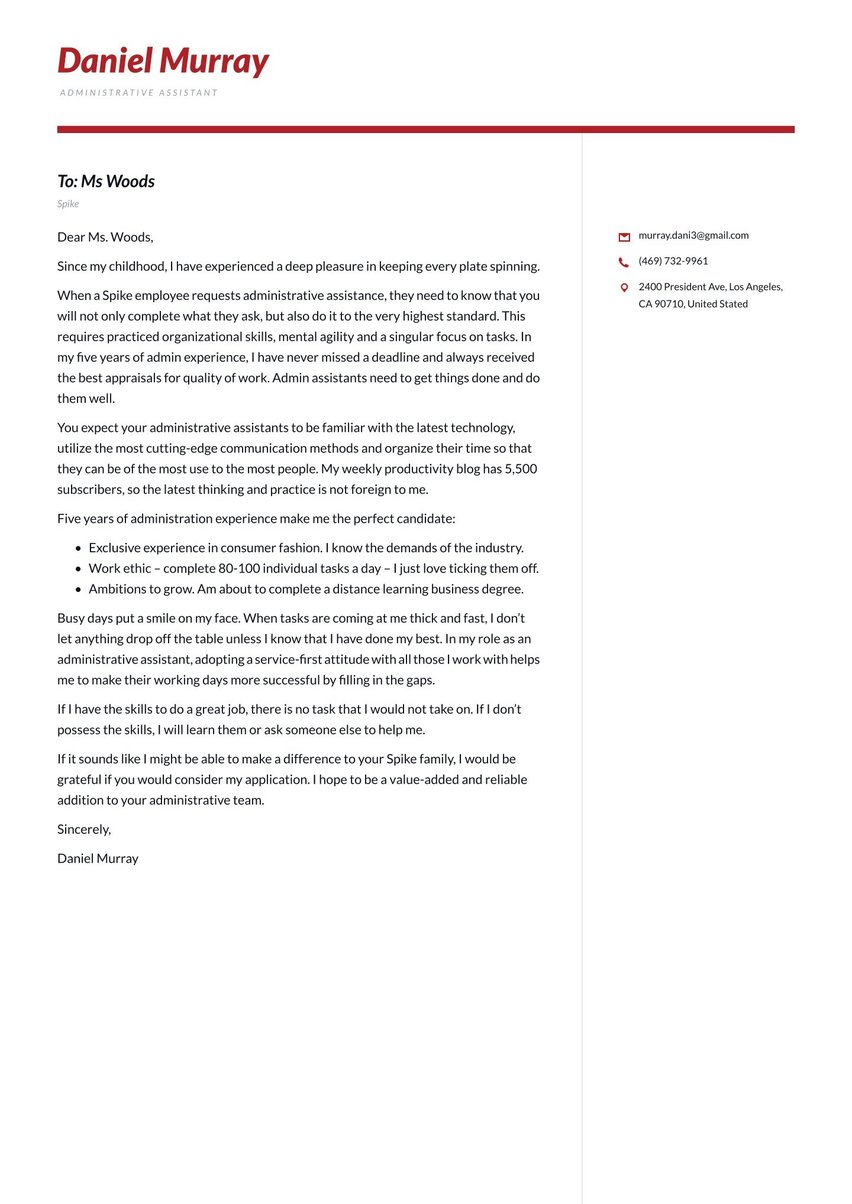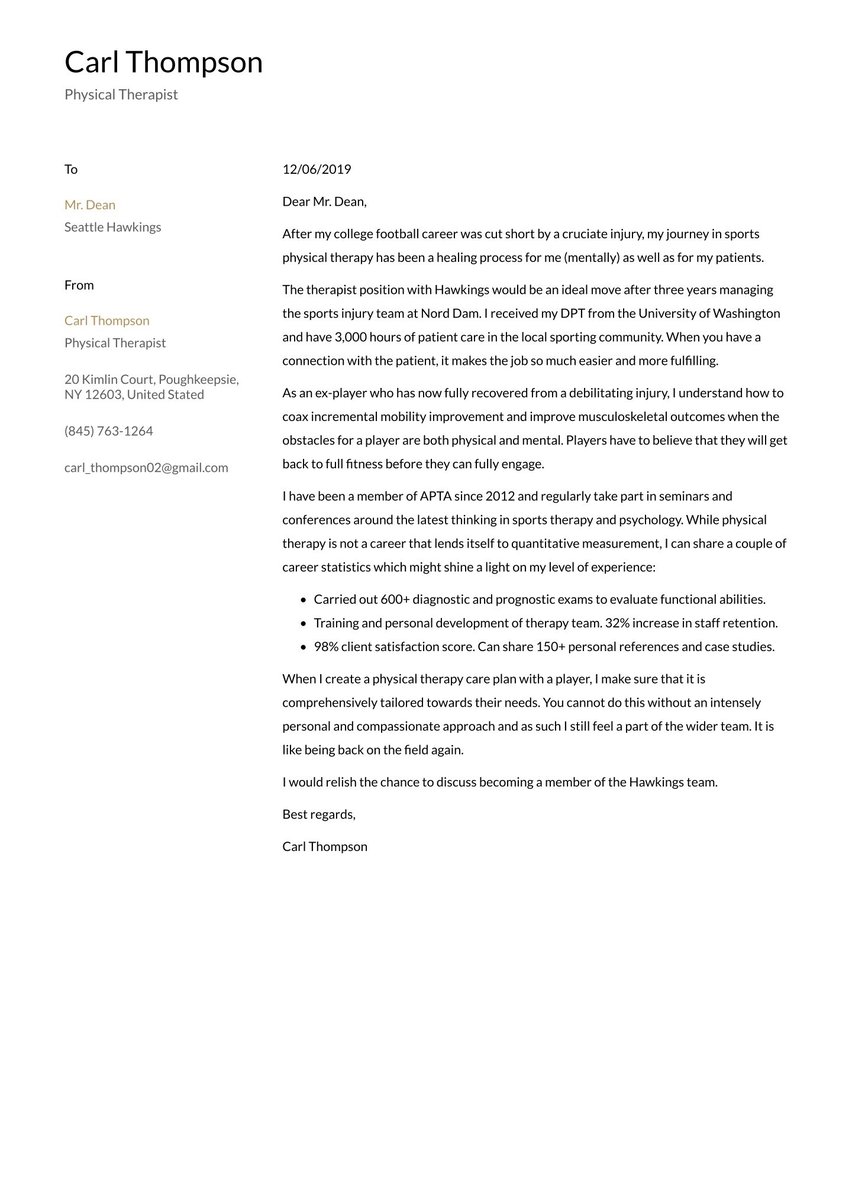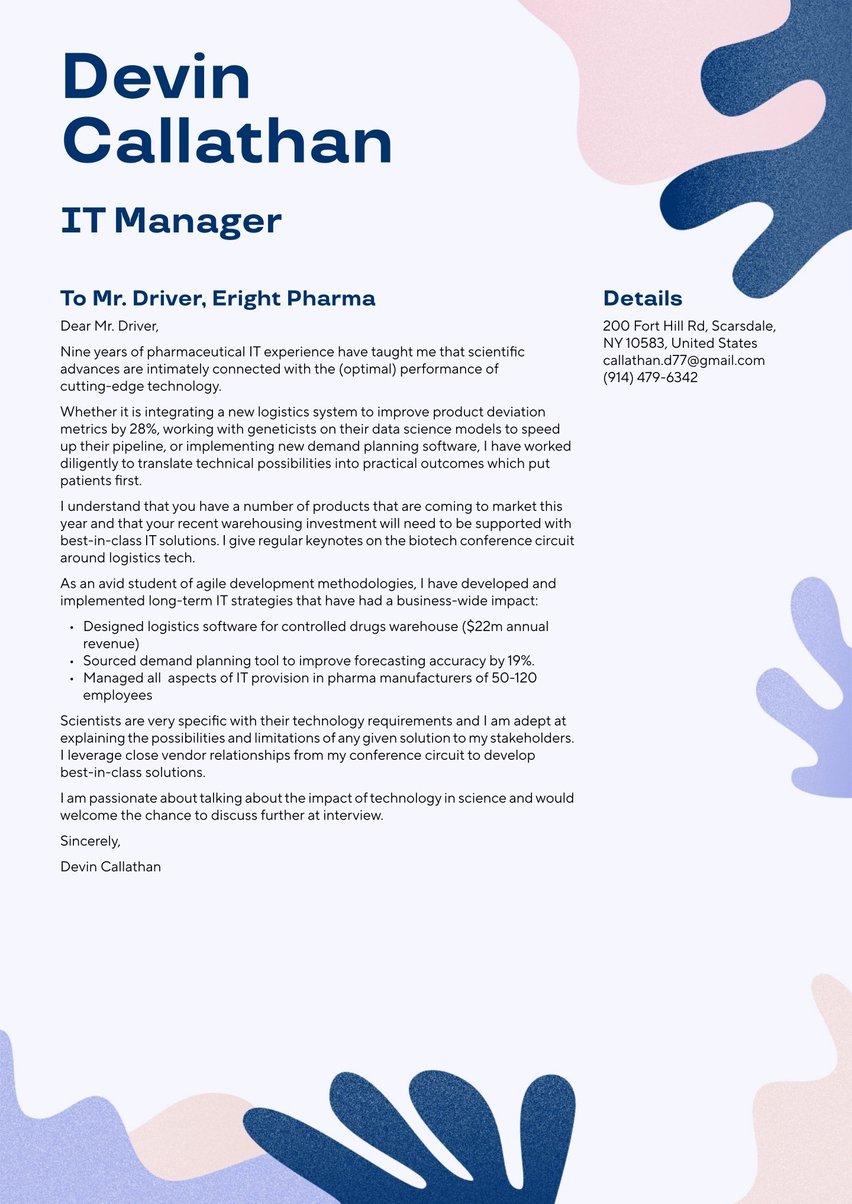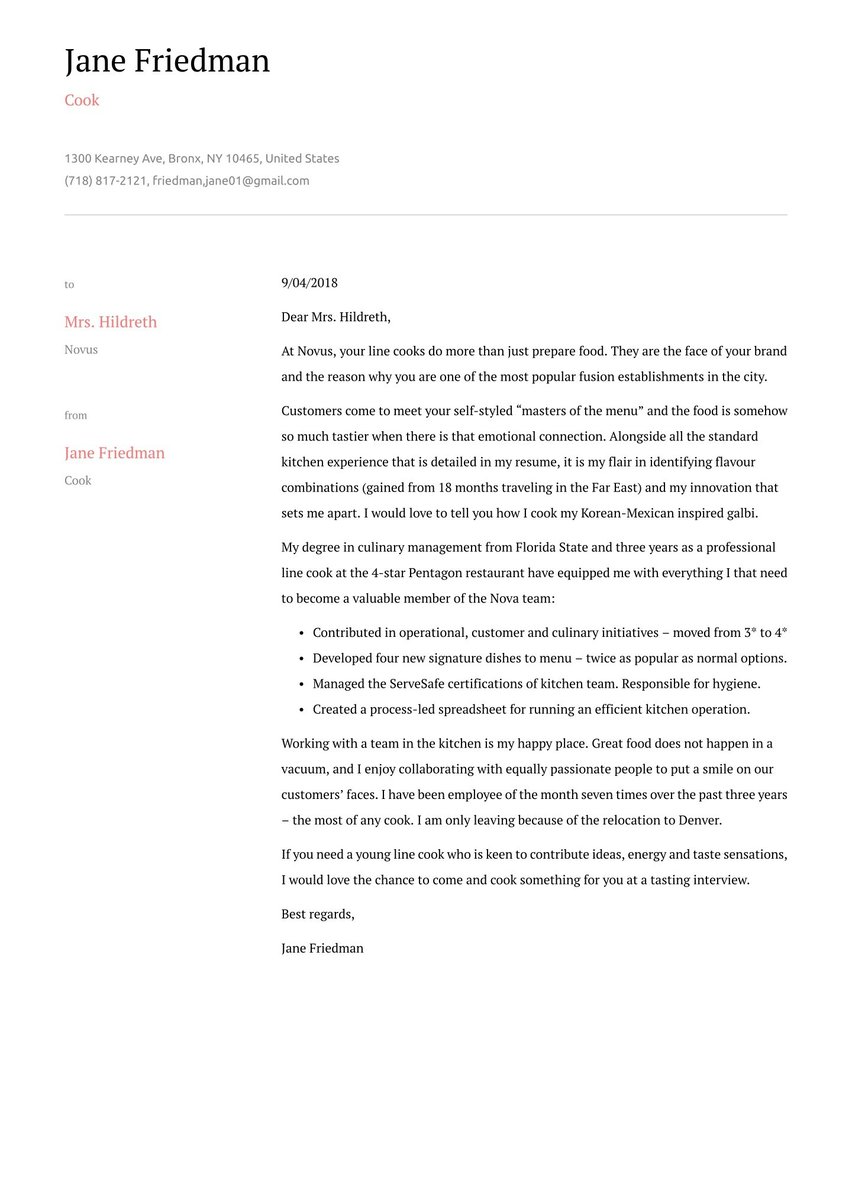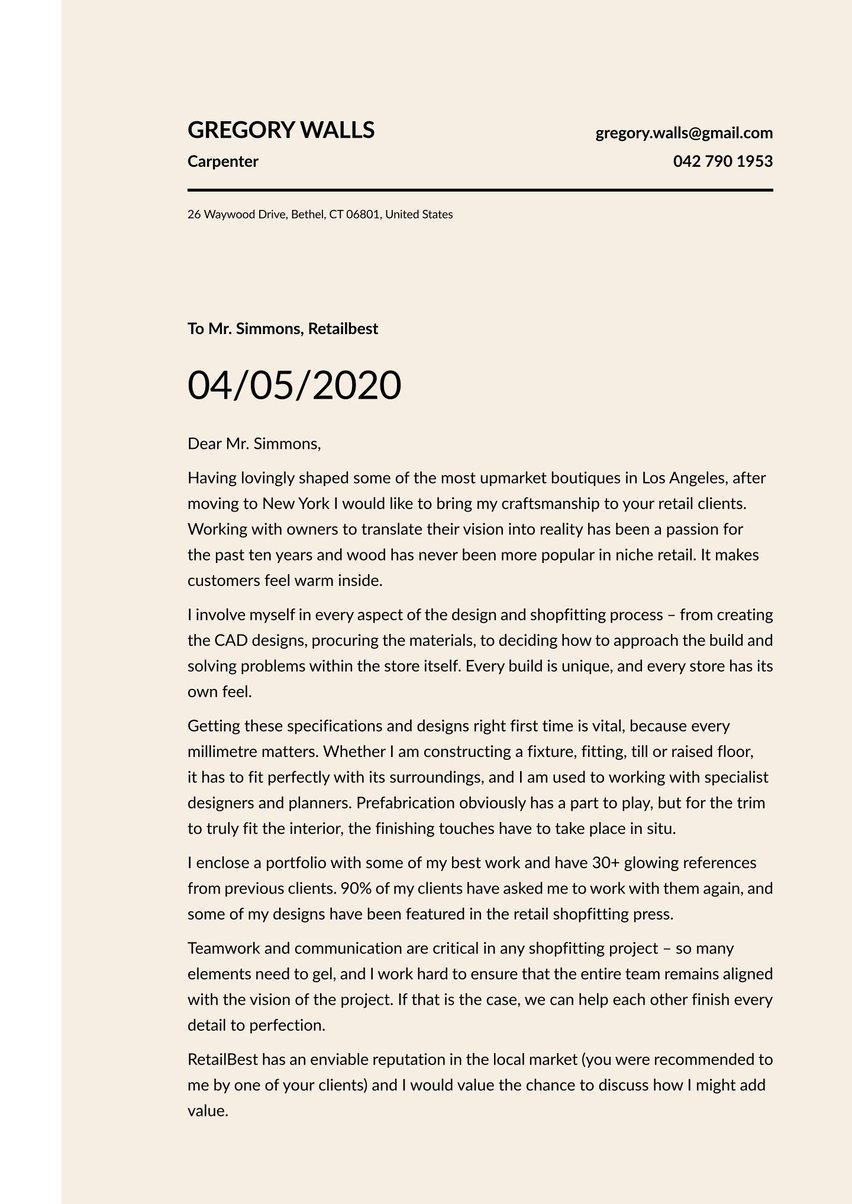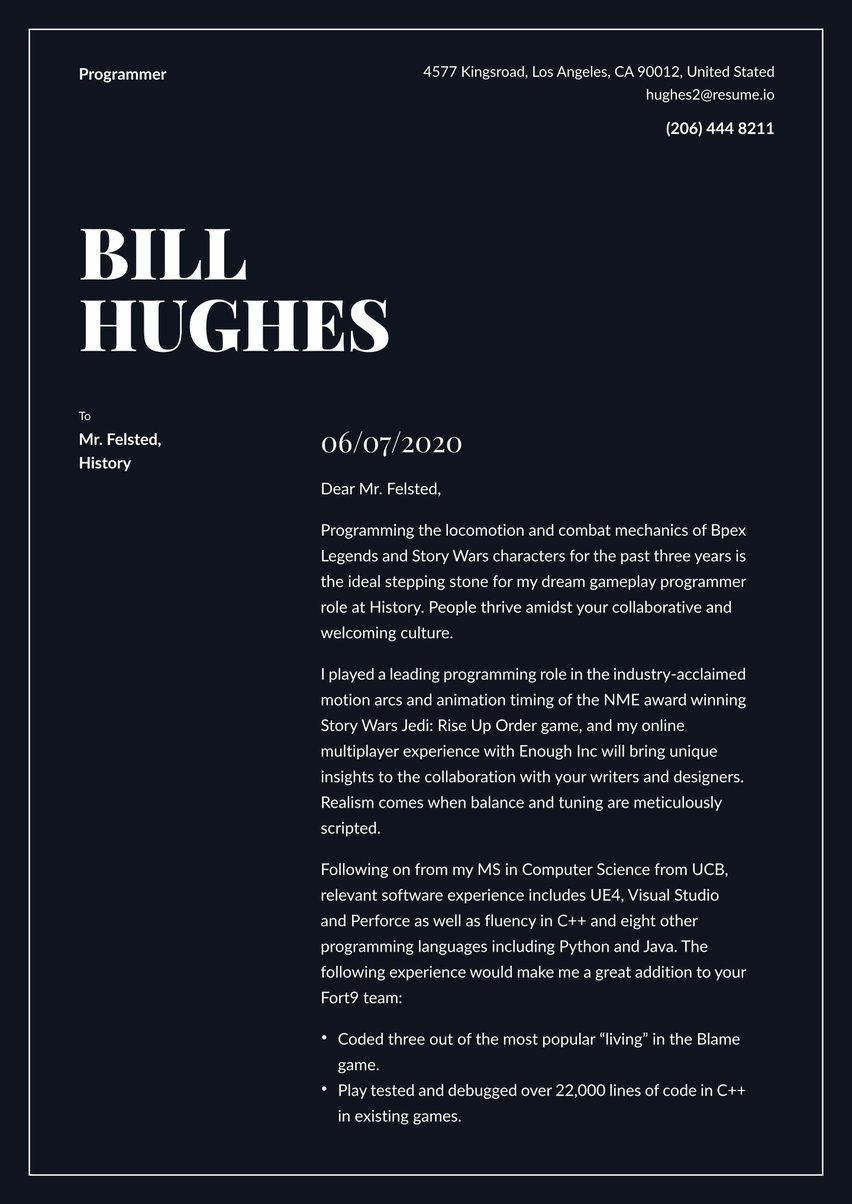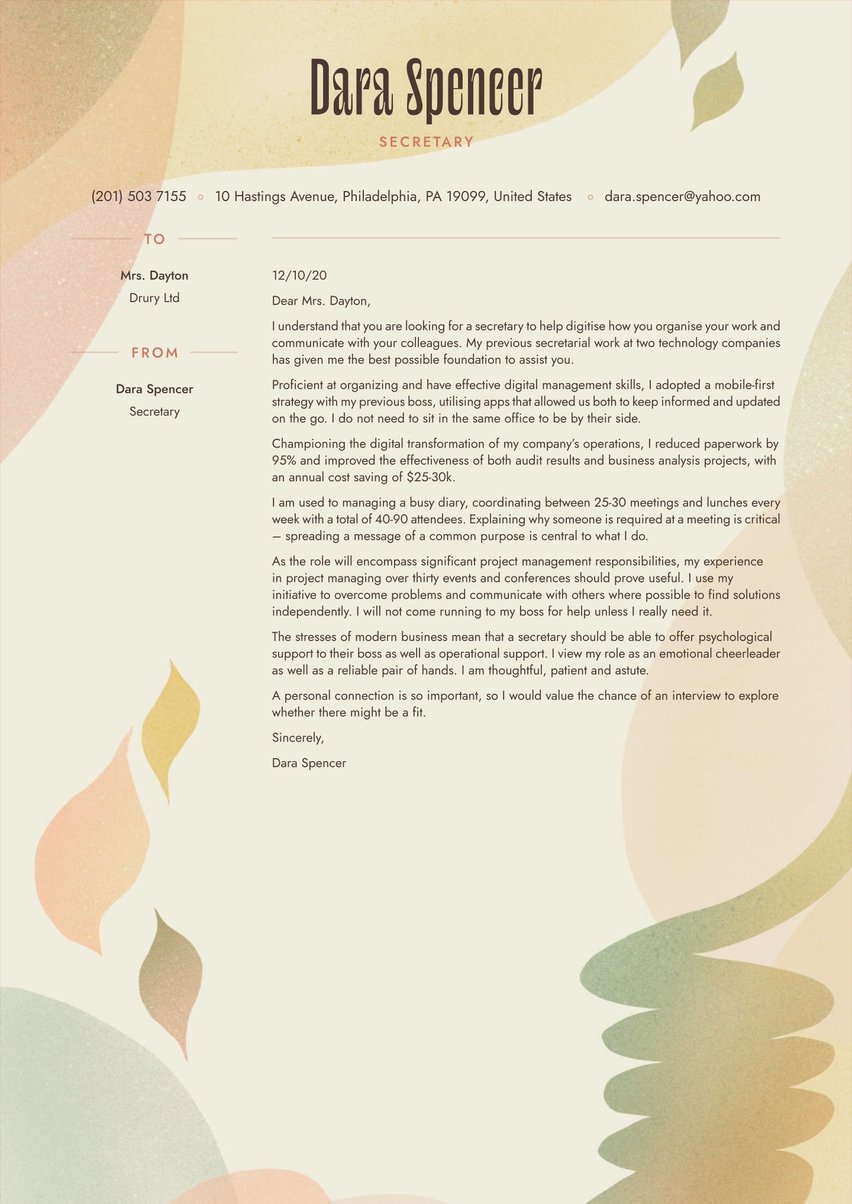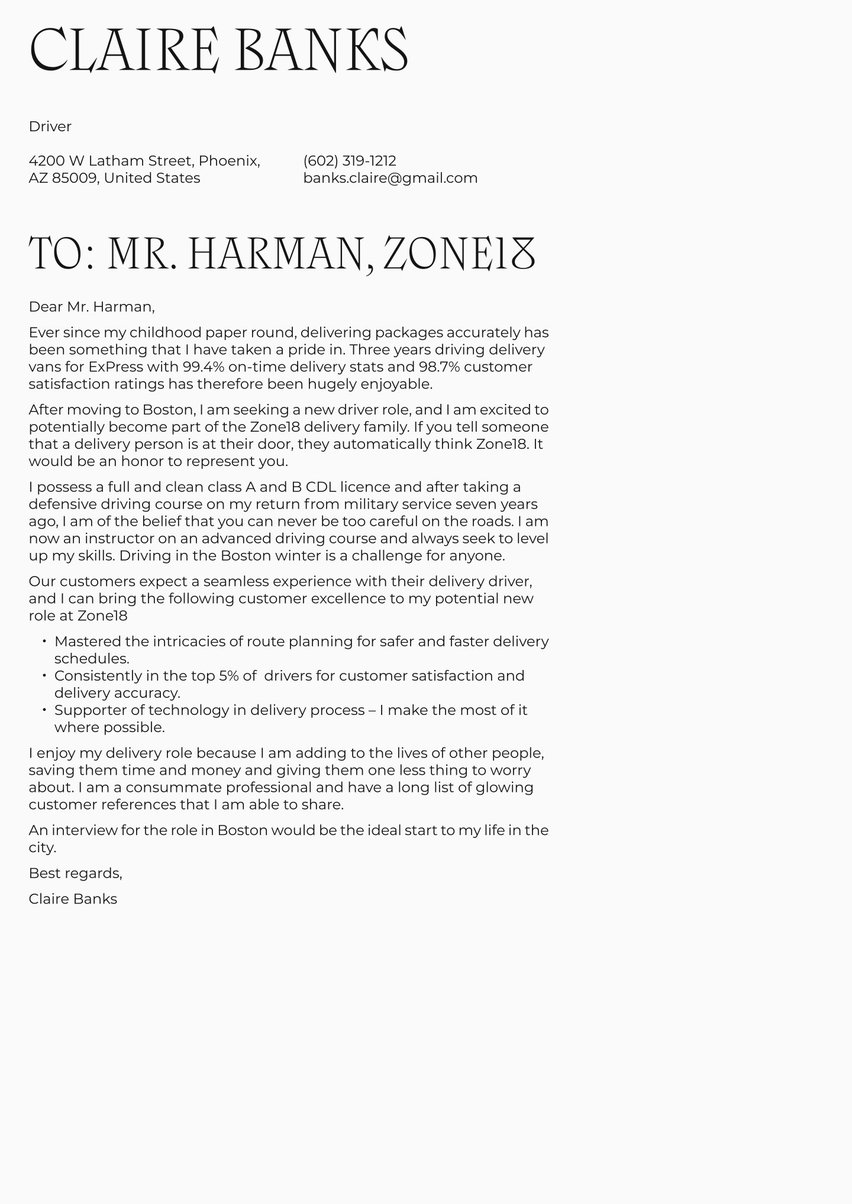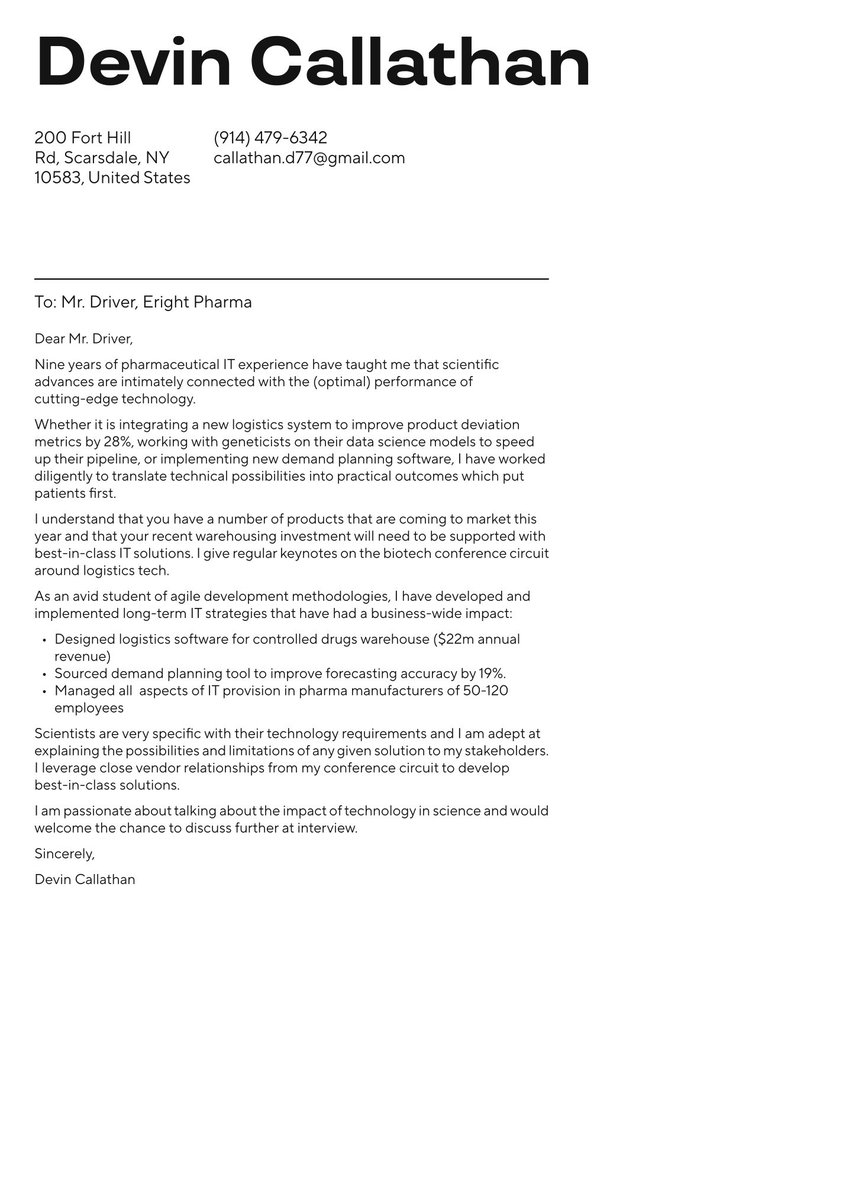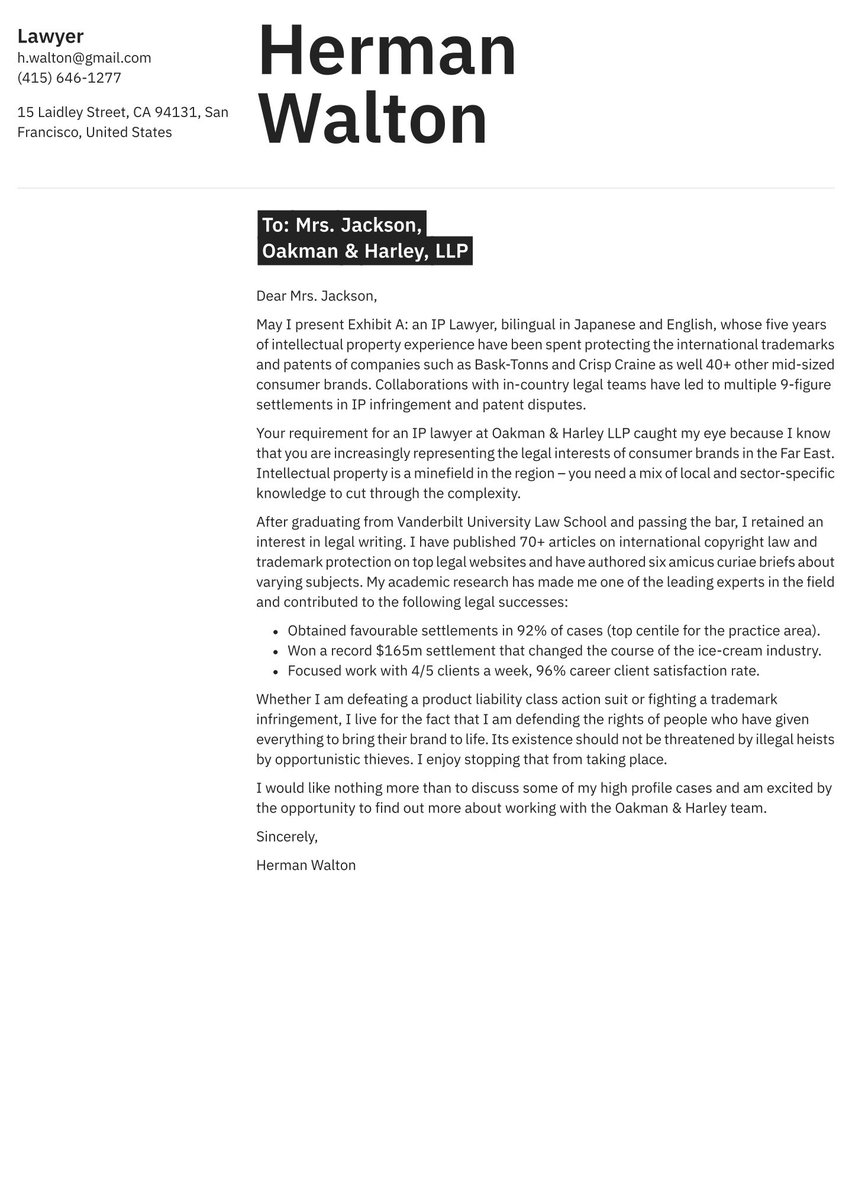A medical assistant position can open up a world of possibilities in the healthcare industry. Before you can begin this journey, however, you must land the job. An effective cover letter is the key to positioning yourself so that a potential employer will see your assets and skills and want to add you to their team.
Convincing a potential employer why they should hire you is about highlighting your strongest skills, personality traits, and experiences. It can be an invaluable way to fill in any gaps left in your resume.
This medical assistant cover letter writing guide and corresponding medical assistant cover letter example show you how to optimize the impact of each section of your medical assistant cover letter.
Medical assist full text-only cover letter example
Dear Mr. Latham,
Having spent four years as a medical assistant at the Fines Hospital, I hope to make my next step in the profession after my move to New Orleans.
I began my career as a Certified Nursing Assistant, learning the essentials of patient care from the best in the business. I enjoyed the rigor of compliance and quickly learned how to integrate technology to ensure the best outcomes. My subsequent degree in Medical Assisting built on my practical knowledge.
I have experience in the full range of geriatric medicine practice, with a specialty in cancer care. My accuracy in both the administrative and medical aspects of the role meant that I was invited to become part of the hospital’s training program and have now started to train new starters myself.
I am experienced in the full range of patient care: explaining treatments and medication, changing dressings, taking electrocardiograms, preparing, and administering medications. Working with the world-class cancer team taught me many lessons that cannot be found in a medical textbook. I am a regular attendee at industry conferences and have a broad network of fellow medical assistants to learn from.
Compassion is obviously at the heart of the job, but you first need to have a solid grasp of the medical situation. Engaging with clients and their families is easier when all the medical boxes have been ticked. I led a project to increase overall engagement with our patient portal, which led to a 37% increase in satisfaction in exit surveys and an improvement in patient payment terms.
I would love to have the opportunity of an interview to tell you more about how I hope that my journey may continue with your medical operation.
Yours sincerely,
Harrison Smith
Sections of a cover letter
If you’ve already created your resume, you know it’s great for expressing dates, employers, and degrees. But no matter how much industry experience you’ve had, this type of data isn’t the whole story. There are moments, events, skills, and achievements that make up who you are as a medical assistant and a person.
That’s why a cover letter is a helpful part of the job search process. This document is a chance for you to convince an employer that you possess the unique qualities other candidates lack.
The first step in creating an effective cover letter is learning about the sections each cover letter should have:
- Cover letter header. Along with your name and the title you are applying for, your header should include your contact information.
- Greeting. You should address the hiring manager by name. You may find their name in the job description, but you may also need to search for it on the company’s website.
- Introduction. You want to catch a hiring manager’s attention from the start with an impactful opening sentence that firmly introduces yourself and presents your top skills.
- Body. Dive deeper into your experience and why you will be a great fit for the company. Use specific examples to show what skills you have mastered.
- Conclusion. In the final paragraph, be sure to ask them to call you for an interview.
- Signature. Keep the entire letter professional down to the signature you use. “Best regards, [Your Name]” is typically the best option.
Along with professionally presenting your skills, you want a hiring manager to get to know you. You can do that by adding your personality to the letter, which helps make your letter more unique.
Looking for more inspiration for your cover letter? You’ll find many cover letter examples on our website, but here are a few you definitely will want to check out:
Introduction of a cover letter
The introduction is one of the most vital parts of a compelling cover letter. You’ll need to inject this section with enough energy and intrigue to keep a hiring manager reading your document even with a stack of other letters waiting to be read.
One of the best ways to do this is with an interesting anecdote, a bold perspective, or an exciting personal introduction. Remember to keep the tone professional and in line with the medical industry.
Dear Ms. Thompson,
I’m thrilled to apply for the Medical Assistant position at Will Creek Health Clinic. With a passion for patient care and a knack for multitasking in busy medical settings, I’m excited to bring my skills and positive attitude to your team.
I read about an assistant position at your clinic and want to submit my application. I don’t have any experience, but I’m willing to learn.
Your introduction should include the skill or asset you have that is most valuable for the role you are applying for, so remember to customize your cover letter for each role.
Dear Mr. Latham,
Having spent four years as a medical assistant at the Fines Hospital, I hope to make my next step in the profession after my move to New Orleans.
Cover letter body
The cover letter body is where you dive deeper into your qualifications. This is your chance to provide a clear and compelling picture of your abilities and experience:
- Highlight the clinical procedures and skills you're particularly strong in by sharing specific examples.
- Showcase your commitment to patient care by explaining what drives you in the medical field.
- Demonstrate your problem-solving skills in a healthcare environment by discussing how you’ve navigated challenges in the past.
- Illustrate your teamwork and collaboration abilities by describing how you’ve effectively worked with other healthcare professionals.
First body paragraph: your suitability for the role (skills & experience)
When writing the first body paragraph, it’s helpful to use the STAR method to explain past achievements and milestones. First, briefly describe a Situation and Task, then the Action you took and the positive Result. For maximum effectiveness, make sure to keep these anecdotes short and relevant to the needs of the potential employer.
You should also make sure you include the following elements in this paragraph:
- Relevant experience. Give examples from your working history that show you have the experience the hiring manager is looking for.
- Unique skills and qualities. What skills do you have that make you an effective medical assistant? How do those qualities relate to the role you are applying for? These are both questions you need to answer in this paragraph.
- Build a personal connection. Do a little research about the company and make your cover letter personal by connecting your experience and goals to the mission of the company.
- Your portfolio. If you have a portfolio or examples of the work you’ve done in the past, include a link to it here. (An online builder tool, such as the one we have available at Resume.io, can make this simple.)
- Career achievements. Draw attention to your top achievements by referencing them in the first paragraph of your cover letter.
- Give concise and focused examples. It’s easier for a hiring manager to know what your skills are when you give examples of you being successful because of them.
The job search is competitive, and as a medical assistant, you’re often up against many candidates with the same certificate or degree and similar amounts of experience. An exceptional cover letter is one of the best ways to maximize your application’s chances.
Because its structure is less rigid than a resume's, you can focus on your most positive moments and biggest achievements in a way that tells your story. Highlighting what makes you a unique caregiver and coworker is the best way to ensure your cover letter has maximum impact.
Second body paragraph(s): alignment with the organization
Once you’ve shown a hiring manager what your skills and experience are, it’s time to align them with the goals of the company. The second paragraph of your body is the best place to tie your experience, skills, and knowledge to the role.
You should also tie all that experience to the medical industry itself. You want to show a hiring manager that you aren’t just a great employee for them, but that you understand the needs and expectations of your industry as well.
To help make it easier for you to write your own cover letter body, let’s look at an example. The following job description can give us some clues as to what to include in our cover letter:
- Assist physicians and nurses with patient examinations, procedures, and treatments.
- Perform diagnostic tests, including EKGs and other laboratory tasks.
- Develop and implement patient care plans.
- Provide compassionate support to patients and ensure they feel comfortable and informed.
When applying for a job that has this job description, the second paragraph of your cover letter body might look something like this.
I began my career as a Certified Nursing Assistant, learning the essentials of patient care from the best in the business. I enjoyed the rigor of compliance and quickly learned how to integrate technology to ensure the best outcomes. My subsequent degree in Medical Assisting built on my practical knowledge.
I have experience in the full range of geriatric medicine practice, with a specialty in cancer care. My accuracy in both the administrative and medical aspects of the role meant that I was invited to become part of the hospital’s training program and have now started to train new starters myself.
I am experienced in the full range of patient care: explaining treatments and medication, changing dressings, taking electrocardiograms, preparing, and administering medications. Working with the world-class cancer team taught me many lessons that cannot be found in a medical textbook. I am a regular attendee at industry conferences and have a broad network of fellow medical assistants to learn from.
Compassion is obviously at the heart of the job, but you first need to have a solid grasp of the medical situation. Engaging with clients and their families is easier when all the medical boxes have been ticked. I led a project to increase overall engagement with our patient portal, which led to a 37% increase in satisfaction in exit surveys and an improvement in patient payment terms.
Call to action & conclusion: end on a high note
Now that you’ve laid out your strongest arguments for why you’re the ideal candidate, it’s time to create a respectful and enthusiastic conclusion. To maximize your chances of getting an interview, use a call to action. This sentence expresses your interest in the opportunity and invites a hiring manager to get in touch. You may also choose to leave your phone number and email address here as well.
Then, sign off with a polite closing like “Sincerely,” “Best,” or “Best Regards.”
End the letter on a positive note and use a call to action to encourage the hiring manager to contact you.
I would love to have the opportunity of an interview to tell you more about how I hope that my journey may continue with your medical operation.
Yours sincerely,
Harrison Smith
Key takeaways
Your cover letter is an important opportunity to make your application stand out from the other candidates. Hiring managers can spot generic copy-paste letters from a mile away. Make sure to tailor each one with skills and accomplishments relevant to the position you’re applying for. Use storytelling and emotional appeal to resonate with the hiring manager. A couple of key numbers and facts can also strengthen your message.
If you want to create the perfect cover letter in just a few minutes, try Resume.io's ready-made and carefully market-researched cover letter templates that you’ll find in our cover letter builder.

